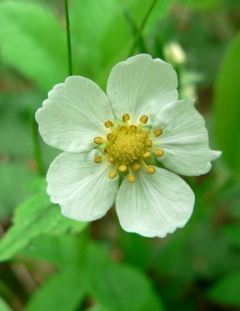

Alpine Strawberries
The botanical name of alpine strawberries is Fragraria x vesca and they are a cousin of wild strawberries. They are also called woodland because they are native to wooden areas.
Their fruit is smaller than conventional ones, but it is produced throughout the growing season. These little berries have an intense and delicious flavor that many people, myself included, prefer over other the cultivated version.
If you love strawberries and have always wanted to try your hand at growing some, but don't have enough sunlight in your garden for the typical, sun-loving fruit, don't worry. Alpine strawberries may be a good choice for your garden.
Used for Herbal Remedies
Not only are they delicious, they are also used in herbal remedies. If you enjoy growing ingredients for herbal teas and natural remedies, they are a good choice.
The leaves can be added to herbal teas for flavor, and infusions made from their leaves can help ease stomach problems like diarrhea and loss of appetite. The berries can be crushed and used as a sunburn remedy, and the juice is antibacterial.
Acidic Soil Needed

Alpines grow best in slightly acidic soil with good drainage and plenty of organic matter. They have shallow roots, so mulch is an important defense against drought or weeds that might compete for water and nutrients. They don't put out runners, so they grow well in containers or small spaces.
Most strawberries are perennials that reproduce by sprouting runners that grow into separate plants. Alpines, though, are annuals. They reproduce by their seeds, and will come back year after year if allowed to reseed freely.
The plants are easy to start indoors, as long as you allow the seeds to freeze for a few weeks before planting.
Gardeners who don't have enough space or sunlight for conventional strawberries or who are looking for a change from the typical berry should try growing alpine strawberries. With their unique taste, medicinal uses, and versatility in the landscape, they make a good choice for many different kinds of gardens. Return from Alpine Strawberries to Growing Strawberries